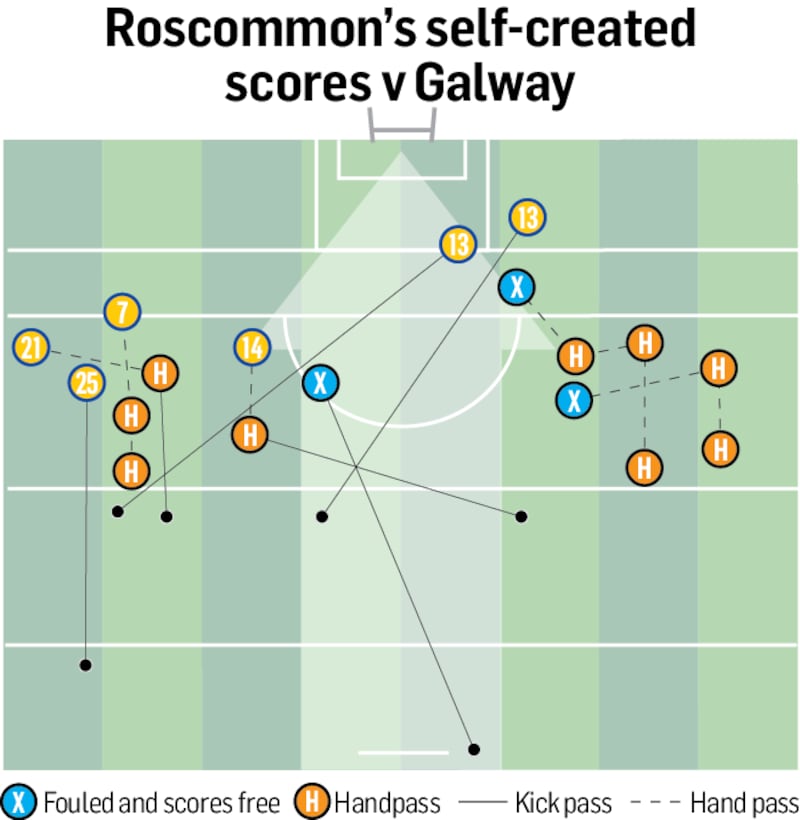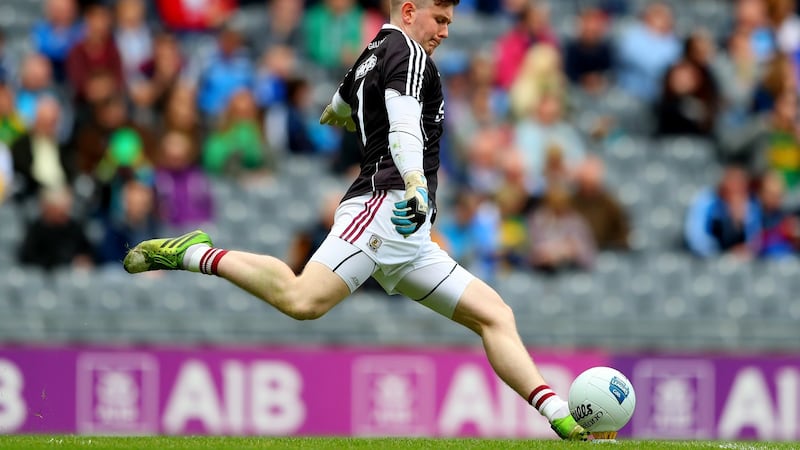Even before their Connacht final collapse against Roscommon, not all Galway football supporters were too convinced about this team.
Connacht champions in Kevin Walsh's second season, consecutive championship wins over a Mayo team that had been in pursuit of six-in-a-row, and Division Two league champions.
The defensive, counter-attacking tone of Walsh’s team however hasn’t quite captured the hearts of a county full of football purists. That’s not to say that they weren’t full of grand illusions coming into this year’s Connacht final, and looking beyond it. But this Galway team do not play ‘the Galway way’.
The sheer class of 2001 is long gone, as Walsh has gone about moulding a team for the modern era. There's still a a lingering hope though that Shane Walsh, Damien Comer and Michael Daly can provide the same excitement as Pádraig Joyce, Derek Savage, and Ja Fallon once did.
This team is rooted from three Under-21 All-Irelands (2005, 2011, 2013) and a minor All-Ireland 10 years ago. They were not restrained by the senior demands of systems. Needs must though, and Kevin Walsh has so far done a good job in bringing Galway back to the high table.
Yet for all that defensive planning, Galway’s full back line is not getting the protection it needs. Which kind of defeats the whole purpose, against a team that kick the ball of course.
In their last three championship games, Galway have conceded a combined 5-15 (from play) to the opposition full-forward line. That is 70 per cent of their overall concessions from play in those games (53 per cent of all of their scores).
Galway’s defensive system is about bunching the area around their own 45 metre line. Forcing traffic down the six channel where they can crowd it out, or out wide where the danger is reduced. Then turn it over and attack.

Johnny Heaney often drops back to cover centre back, the other half forwards drop back, and the midfielders do accordingly as the half back line squeezes. It's simple, but at this stage Galway have it off.
And it works a treat, against running teams such as Mayo.
In Galway’s Connacht semi-final win against them last month, only two of Mayo’s scores from play stemmed from a kickpass inside. And one of them still included six handpasses and another kickpass after the ball had been won in the full forward line, before the ball was kicked over the bar.
The template
Roscommon however followed the template set by Tipperary in last year’s All-Ireland quarter-final win. Forty per cent of Tipp’s scores from play (3-10) that day were the result of kick-passes into their full forward line.
And so, of Roscommon’s self-created attacks (that is attacks that they started by bringing possession beyond the opposition ‘45’) 70 per cent involved a kick pass inside.
They withdrew their half-forward line and looked to kick beyond the Galway defensive line.
They actually kicked a number of these passes astray, but enough hit their target for a nine-point win. Galway’s full back line won only two balls that were kicked inside to the Roscommon forwards. That shows the quality of ball, which was popped, bouncing in front of the outcoming attackers who were constantly moving and showing, out in front.
The Murtagh brothers, Cian Connolly, and Donie Smith when he came on, managed 1-5 from play.
Galway actually conceded 0-3 from frees for off-the-ball jersey-pulling in their full back line, and they conceded 1-2 directly from poor kickouts. Roscommon scored two points from distance, and only actually had to create nine (1-8) of their own scores by working possession beyond the Galway ‘45’.

Next up for Galway are Donegal. A team that appeared to peak by March this year (with three wins and two draws in their first six Division One games), and now appear stand-offish in both attack and defence.
Against Meath, 76 per cent of their attacks were through the hands. Neither of their two main scoring threats, Michael Murphy or Paddy McBrearty, were left to their own devices in the inside line.
Murphy played all 70 plus minutes at midfield, where Donegal were intent on passing every attack through him at some point. The quarter-back; he had 46 possessions.
McBrearty floated around the forward line, but was rarely an option inside for a kick pass.
Running game
This Donegal team do not have the power of the 2012 crop, but their running game has worked against the very best down the years. Nonetheless, against a team set up like Galway, they may be better served to keep McBrearty deep inside, and give Murphy some good stretches inside at No 14. In that way they can exploit Galway’s weaknesses as Tipp and the Rossies have done.
Another area where the Tribesmen fell down in the Connacht final was the kickout.
In Kevin Walsh's three years as Galway senior manager, five goalkeepers have played in the championship. Ruairi Lavelle has played every league and championship game this year however and he will only reach his potential with experiences such as the Roscommon defeat.
Galway had 12 short kickouts against Roscommon and lost a quarter of them. This forced them to go long with 18, which wasn’t a bad tactic considering their aerial strength around the middle. But Roscommon won 10 of those.
Fiontán Ó Curraoin caught two balls, as Tadhg O'Rourke did well to break anything else. The excellent Enda Smith caught three marks and bossed the middle, although Paul Conroy his marker did have a fine second half on the ground.
Roscommon won nine of their 11 short kickouts, and six of their 10 long ones. So overall, Roscommon won 57 per cent of all of the game's long kickouts. But it’s Galway’s short kickout game which let them down more. They weren’t able to secure guaranteed possession at key periods, and worse still they were conceding scores with failed attempts to do so.
Galway need to work harder to give their young goalkeeper options, as well as dropping their defensive line back further to protect a struggling full back line.
But then again, if Donegal approach this game as they did the last, they won’t need to change a thing defensively.















